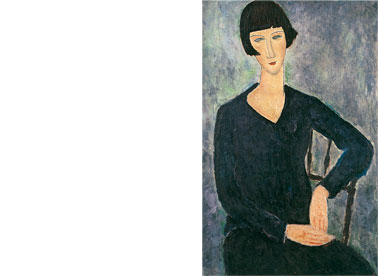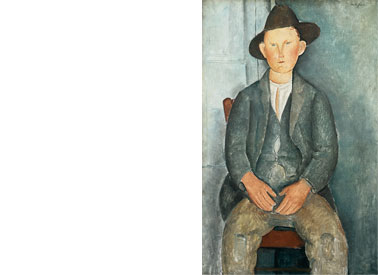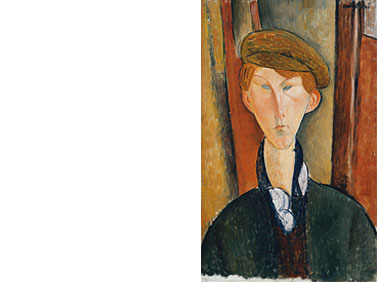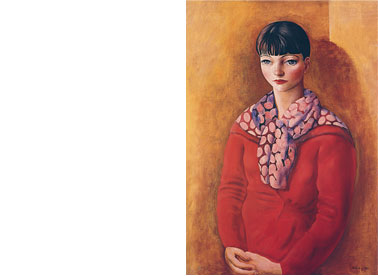

Portraits (II)
Most of Modigliani's output consisted of portraits. In addition to providing his main source of income, these works enabled the artist to embrace the great racial and cultural mix to be found in Paris around 1915 to 1920, and together these likenesses constitute a mosaic of life in Montparnasse. During his stay in Cagnes and Nice between 1918 and 1919, Modigliani also painted peasants and village people. For the artist, the portrait was a way of opening himself up to "others" and of entering into other lives.
In Montparnasse, Modigliani met the leading figures of French art of the day, some of whom also devoted considerable time to portraiture. Among those closest to Modigliani were other Jewish painters such as Chaīm Soutine and Moīse Kisling, with whom he regularly associated from 1913. Soutine's work deploys a tempestuous expressionism that distorts and consumes the subjects, while Kisling is much more restrained, enveloping his figures in vivid colours and intense light.
Most of Modigliani's output consisted of portraits. In addition to providing his main source of income, these works enabled the artist to embrace the great racial and cultural mix to be found in Paris around 1915 to 1920, and together these likenesses constitute a mosaic of life in Montparnasse. During his stay in Cagnes and Nice between 1918 and 1919, Modigliani also painted peasants and village people. For the artist, the portrait was a way of opening himself up to "others" and of entering into other lives.
In Montparnasse, Modigliani met the leading figures of French art of the day, some of whom also devoted considerable time to portraiture. Among those closest to Modigliani were other Jewish painters such as Chaīm Soutine and Moīse Kisling, with whom he regularly associated from 1913. Soutine's work deploys a tempestuous expressionism that distorts and consumes the subjects, while Kisling is much more restrained, enveloping his figures in vivid colours and intense light.

Amedeo Modigliani
Seated Woman in Light Blue Dress, 1918
Oil on canvas. 92 x 60 cm
Moderna Museet, Stockholm
Donation Oscar Stern, 1951

Amedeo Modigliani
The Little Peasant, c. 1918
Oil on canvas. 100 x 64.5 cm
Tate. Presented by Miss Jenny Blaker in memory of Hugh Blaker, 1941
© Tate, London 2007

Amedeo Modigliani
Young Man with a Cap, 1919
Oil on canvas. 61 x 37.8 cm
The Detroit Institute of Arts
Bequest of Robert H. Tannahill
Photograph © 1984 The Detroit Institute of Arts
Young Man with a Cap, 1919
Oil on canvas. 61 x 37.8 cm
The Detroit Institute of Arts
Bequest of Robert H. Tannahill
Photograph © 1984 The Detroit Institute of Arts

Kisling, Moīse
Kiki de Montparnasse with Red Dress, 1933
Oil on canvas. 92 x 65 cm
Association des Amis du Petit Palais, Geneva
Studio Monique Bernaz, Genčve














